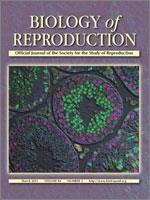During placentation, the concentration of fibrinous deposits on the surfaces of maternal vasculature plays a role in villous development and has been strongly implicated in the pathophysiology of human fetal growth restriction (FGR). Fibrinous deposits are conspicuous sites of platelet aggregation where there is local activation of the hemostatic cascade. During activation of the hemostatic cascade, a number of pro- and antiangiogenic agents may be generated at the cell surface, and an imbalance in these factors may contribute to the placental pathology characteristic of FGR. We tested the hypothesis that angiostatin4.5 (AS4.5), a cleavage fragment of plasminogen liberated at the cell surface, is capable of causing FGR in mice. Increased maternal levels of AS4.5 in vivo result in reproducible placental pathology, including an altered vascular compartment (both in decidual and labyrinthine layers) and increased apoptosis throughout the placenta. In addition, there is significant skeletal growth delay and conspicuous edema in fetuses from mothers that received AS4.5. Maternally generated AS4.5, therefore, can access maternal placental vasculature and have a severe effect on placental architecture and inhibit fetal development in vivo. These findings strongly support the hypothesis that maternal AS4.5 levels can influence placental development, possibly by directly influencing trophoblast turnover in the placenta, and contribute to fetal growth delay in mice.
How to translate text using browser tools
27 October 2010
Thrombophilic-Type Placental Pathologies and Skeletal Growth Delay Following Maternal Administration of Angiostatin4.5 in Mice
Catrin S. Rutland,
Sarah D. Atkinson,
Mallinath Mukhopadhyay,
Keyi Jiang,
Gerald A. Soff,
Terry M. Mayhew,
Christopher A. Mitchell
ACCESS THE FULL ARTICLE

Biology of Reproduction
Vol. 84 • No. 3
March 2011
Vol. 84 • No. 3
March 2011
angiostatin
embryo
growth restriction
placenta
trophoblast




